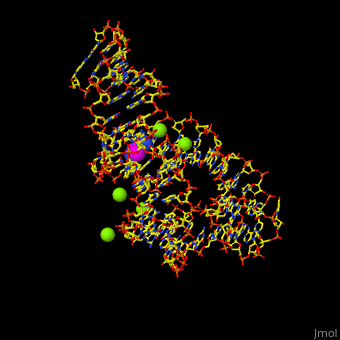Function
Normally, a variety of proteins and protein cofactors control gene expression in an organism by binding to different sites on messenger RNA (mRNA). Riboswitches are genetic regulatory elements that are built directly into the RNA. They are a type of noncoding RNA that regulate gene expression in the absence of proteins by switching from one structural conformation (shape) to another in response to ligand binding. Most contain a single binding site that recognizes a specific ligand. The ability of a riboswitch to discriminate against molecules that are similar or closely related to its ligand is essential to prevent metabolic misregulation[1].
The various classes of riboswitches discovered so far are differentiated by their respective ligands. Every class of riboswitch is characterized by an aptamer (binding site) domain, which provides the site for ligand binding, and an expression platform that undergoes conformational change. The sequences and structures of aptamer domains are highly conserved, and therefore exhibit little variation among riboswitches belonging to the same class.
- M-box riboswitch recognizes Mg+2[2].
- YdaO riboswitch recognizes ATP[3].
- yybp-ykoy riboswitch recognizes Mn+2[4].
- PRPP riboswitch recognizes phosphoribosyl pyrophosphate[5].
- ZMP riboswitch recognizes aminoimidazole-4-carboxamide riboside 5'-monophosphate[6].
- ZTP riboswitch recognizes aminoimidazole-4-carboxamide riboside 5'-triphosphate[7].
- ThiM riboswitch recognizes thiamine pyrophosphate[8].
For details on guanine riboswitch see
Structural highlights
Atomic-resolution structures of riboswitch binding sites show that they make numerous hydrogen bonds with their ligands, forming contacts that stabilize RNA interactions to further increase affinity. Some binding sites form pockets that entirely engulf the ligand, and in these instances an induced-fit mechanism of binding must occur. The [9]. Water molecules are shown as red spheres.
3D structures of riboswitch
Riboswitch 3D structures

